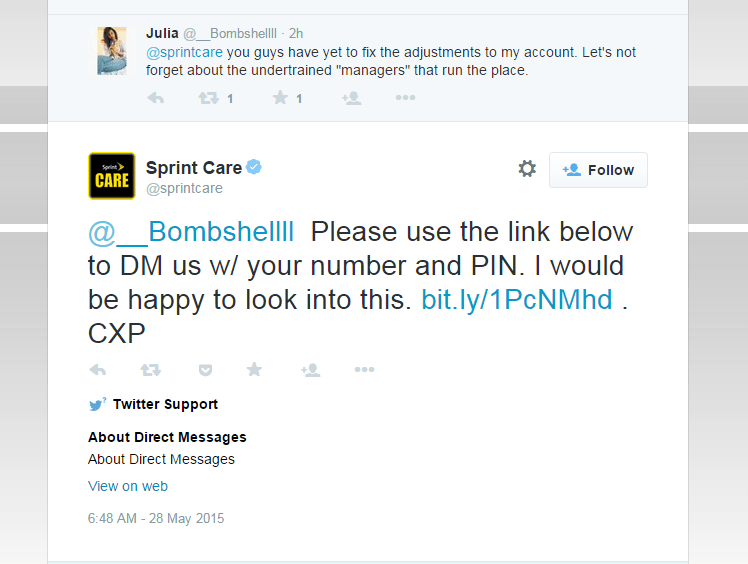Using Twitter’s Direct Messaging For Customer Service.
May 28, 2015
 Are you using Twitter for your business?
Are you using Twitter for your business?Are you trying to improve customer communication and satisfaction?
Are you leveraging Twitter’s direct messaging update for customer service?!
Twitter’s newest direct messaging update is making it possible!!
How Twitter’s messaging update works:
The new update allows users to opt into receiving direct messages from anyone. This removes the need for the users to follow each other before being able to use direct messaging- removing the barrier that normally ended conversations before they ever began. If you are looking to improve your customer service, I suggest you follow the following 3 tips immediately!
The first step will be to actually turn on this new feature! This option is turned off by default. You will have to go to your security and privacy settings to manually turn it on.

Use direct messaging only for customer service!
It may be tempting to begin sending marketing messages directly to everyone on Twitter. DO NOT DO THIS!!! This will only hurt your brand image, and limit your reach. Users will mark your messages as spam, or worse, block your account entirely. Twitter users are well known for disliking impersonal messages. The number one reason users block business accounts is automated direct messages*The best way to initiate a direct message conversation is to invite them to direct message you.
Suppose a user has a question, or reports an issue on Twitter, and you need more personal information from this user to reply i.e. an account number. How would you handle this situation? Ask them to tweet the account number? Immediately send them a direct message?
The correct answer is to invite the user to direct message you via an @reply. Here Is a perfect example by Sprint Care.

There are a few advantages to inviting users to initiate the direct messaging conversation.
-
You will know they consent to receiving direct messages. If the user is not a follower, and simply has a question regarding your business, you want to make sure they are able to receive direct messages.
-
Sensitive information is protected i.e. account numbers. Taking a conversation into a private setting will protect the customer, and improve the relationship.
-
You create a public record of your response to the comment. Customers will see you addressing the issue. If you respond to the @reply with a direct message, casual observers and followers will think that you are ignoring the issue.
-
Your message won’t go unnoticed. Typically, users who tweet an @reply will expect an @reply in return, not a direct message. It is also likely that the user has been bombarded with direct messages from other, less savvy businesses, and is ignoring their inbox.
-
It is easy to respond quickly with a template without coming off as impersonal. Having a direct invitation template ready will decrease your response time, and will show your followers that you are listening to their comments.
In closing
This update is relatively new, so it is difficult to say if it will change how users reach out to businesses. All that we can do for now is opt in to the direct messaging feature, and keep a close eye on account activity.
What are your thoughts? Will Twitter’s direct messaging update revolutionize your customer service? Please share your experience and insights in the comments below or on our Facebook page.
Marketing That Grows Your Business
©2000 - CyberSpyder Marketing Services

